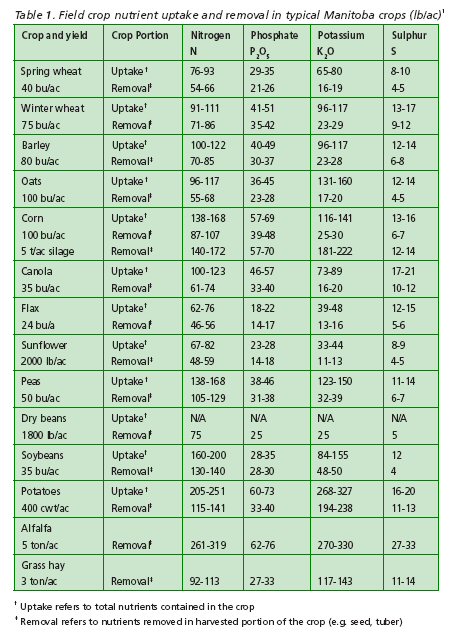Soil Fertility Guide
Introduction
Providing an adequate supply of essential plant nutrients has a major impact on crop yields and is one crop production factor that can be readily managed.
The purpose of this guide is to provide an overview of soil fertility practices in Manitoba and general fertilizer use considerations. Producers are encouraged to use this information in conjunction with reliable soil tests, their own experience and, when required, the assistance of a professional agronomist to develop effective, environmentally sound and economically viable fertilizer management practices.
Five key practices must be implemented to achieve this goal:- apply only those nutrients that will result in economic yield increases
- apply appropriate nutrient rates
- apply appropriate sources of fertilizer nutrients
- apply nutrients at appropriate timing
- apply using the most effective and practical application techniques
Practices that are economically effective and practical will serve to minimize potential adverse effects on the quality of soil and water resources.
Nutrient requirements and crop responses on Manitoba soils
At least 16 elements are essential plant nutrients. An insufficient supply of any one or more of these nutrients can have a detrimental effect on plant growth and, ultimately, crop yields. All but three of these nutrients, carbon, hydrogen and oxygen, are derived mainly from the soil. Only four nutrients - nitrogen, phosphorus and, to a lesser degree, potassium and sulphur - are likely to be of any concern for crop production on mineral soils in most areas of Manitoba.
Table 1 lists the amount of nutrients typically removed with the harvest portion of several Manitoba crops 1 . The soil often supplies the entire crop requirement for most nutrients.
The difference of uptake and removal is straw or vines left in the field.
Values are based upon the yield in the first column. Values can be adjusted for different yields, by scaling according to the base yield.
For further information, contact your Manitoba Agriculture Representative.

